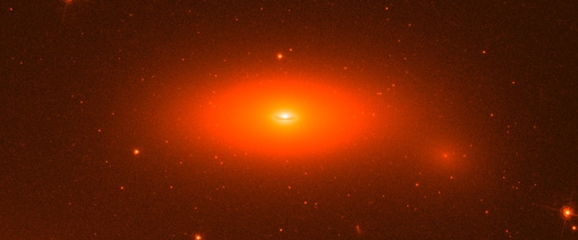Astronomers Have Found A Supermassive Black Hole At The Center Of An Oddball Galaxy
This article is more than 2 years old
Astronomers have discovered a supermassive black hole at the center of an “oddball” galaxy, and it’s thought to be the most massive black hole yet discovered.
According to UniverseToday.com, as part of the Hobby-Eberly Telescope Massive Galaxy Survey at the University of Texas in Austin, astronomers have discovered a giant black hole at the center of the “NGC 1277” galaxy, which is estimated to be the equivalent of 17 billion solar masses — in other words, it’s 17 billion times the mass of our own Sun. The galaxy is 220 million light-years away, in the constellation Perseus.

The odd thing about this galaxy is its size in relation to the black hole at its center. The galaxy is only a tenth the size of the Milky Way, but somehow the black hole makes up 14% of its entire mass. “This is a really oddball galaxy,” said Karl Gebhardt of The University of Texas at Austin. “It’s almost all black hole. This could be the first object in a new class of galaxy-black hole systems.”
The radius of NGC 1277 is about 300 astronomical units, or the distance between the Earth and the Sun times 300. For some perspective, it’s 11 times wider than Neptune’s orbit, which is 30 times wider than our own solar orbit. If you were to travel across NGC 1277 at the speed of light, it would take you four Earth days to make the trip across. Now that’s humongous!

The discovery was made using the Hobby-Eberly Telescope and was part of a survey to examine the relation between galaxies and black holes. Astronomers now have a new understanding of how black holes work because of NGC 1277. “The mass of this black hole is much higher than expected,” said Gebhardt. “It leads us to think that very massive galaxies have a different physical process in how their black holes grow.”












